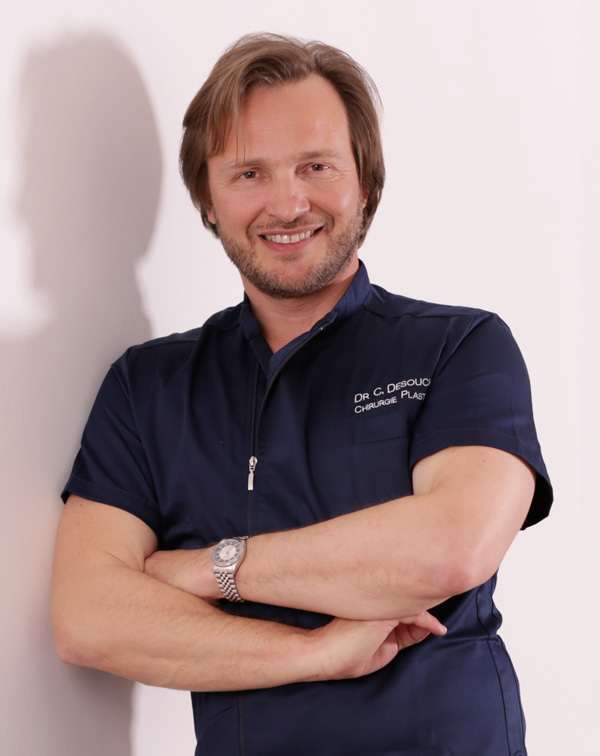Androgenogenic alopecia corresponds to a progressive and permanent loss of hair from the anterior and upper parts of the scalp. The earlier the fall begins (15-16 years), the more important it will be, resulting in extreme cases in Socratic baldness, where only a narrow band of hair remains covering the neck and sides of the skull.
Transplant intervention by FUT
It involves grafting hair from a dense area into a bald area.
A 1 to 2 cm wide scalp strip is taken from the neck area.
The strip is then cut into micro grafts of 1 to 3 hairs.
These micro grafts are placed in the area to be treated while respecting the natural orientation of the hair. Mono-hair implants are made on the anterior line in order to obtain a more natural effect. 2 to 3 hairs implants are used in the more posterior areas to increase hair density.
The donor area is sutured with deep stitches and superficial stitches.
Points can be withdrawn after 10 days.
The anesthesia used is generally local, sometimes associated with intravenous sedation.
The operation is most of the time performed on an outpatient basis, with a discharge the same day.
Initial consultation
The initial consultation makes it possible to detect pathologies that can cause alopecia such as hypothyroidism, diabetes or iron deficiency. In case of doubt, an assessment will be made.
A careful questionnaire will allow us to assess the motivations and desires of the patient. Together, we will objectify the result that can be expected after a single operation and the probable number of operations required in order to obtain a satisfactory result.
Complications of a FUT hair transplant
Any surgery, even minor, carries risks. These complications are infrequent and usually minimal in this situation. The risk of reaction to anesthesia cannot be ruled out.
A hematoma or bleeding may require revision surgery.
The infection is exceptional in the scalp.
Epidermal cysts may appear after a few months on the transplanted area. It is sometimes necessary to incise them without damaging the grafts.
The scar in the harvest area is normally quite thin. An enlargement of this scar is quite rare. This scar is however visible if the area is completely shaved.
Following the instructions before and after surgery can reduce the appearance of complications.
Before surgery
It is imperative to stop smoking at least one month before the surgery. Taking aspirin is prohibited 10 days before the operation.
Before the surgery, it is necessary to wash completely with an antiseptic soap.
It is important to provide someone who can take you home after your hospitalization.
Postoperative follow-up of a FUT hair transplant
The postoperative effects are generally not very painful.
On each graft, a small crust forms that should not be scratched.
The transplanted hair falls out quickly and then grows back between the second and third month.
Bruising and swelling of the forehead may appear in the days following surgery.
Hair washing is possible after the 2nd day.
It is necessary to have reduced activity for 3 to 5 days.
Threads are removed between the 10th and 15th day.
The practice of a sporting activity can be considered from the 4th week.
The result
The result is visible from the 6th month. A single intervention is generally not sufficient to obtain a satisfactory result. Even after several sessions, the hair density obtained will never be that of normal hair.
Important information
This text provides basic information on the principles and procedure of hair transplantation. A more detailed information sheet will be given to you during your consultation. A good understanding of the process and the expected result is essential before considering this intervention. It should be emphasized that the goal of this surgery is to bring improvement and not to achieve perfection. If your wishes are realistic, you will be satisfied with the result.



